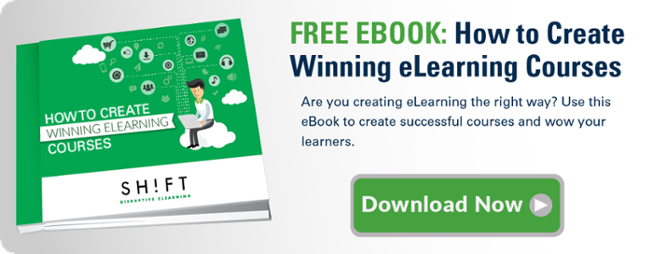 The challenges eLearning professionals face daily are many and varied, and in many ways do not differ too much from the challenges any teacher may face when contemplating how best to hold the students’ attention.
The challenges eLearning professionals face daily are many and varied, and in many ways do not differ too much from the challenges any teacher may face when contemplating how best to hold the students’ attention.
The traditional Dickensian methods of forcing a student to be attentive to avoid punishment have now thankfully been superseded by more effective methods that should be included into any eLearning design.
Given that learners today have more competing stimuli fighting for their attention than ever before, makes it vital to do everything possible to grab their attention using these four simple psychological triggers. Incorporating these will undoubtedly go a long way in creating an effective eLearning course.
1) Attention is a limited resource.
Firstly, we must acknowledge an obvious but vital fact, namely that no one can be attentive to everything at once. In fact, people can attend to only a very small amount of information at any one time. Imagine that we were able to give undivided attention to all stimuli streaming into our consciousness through our senses at once like some Kryptonian superbeing. Such an experience would be far from pleasant, and our brains, amazing though they are, just wouldn’t be able to cope with that level of input. If we pay attention to too many things, we can’t pay attention to what is really important. Simple.
Attention is scarce, therefore eLearning designers must ensure that the main teaching points on the screen stand out and are particularly attention grabbing. This way, they’ll be able to guide them to those elements that are more important than others. Remember that learners must be selective about what they focus on and learn. So, by including key information up front you can convince them to read on rather than exit the course.
2) Our minds are drawn to pay attention to new stimuli.
Recently, an experiment was conducted at Kennesaw State University in Georgia, in which students were issued with a specially adapted pair of glasses fitted with a device that measured the direction of the wearer’s gaze and for how long they held their gaze in any particular direction, all good indicators of their internal state of attention. Now, the common assumption is that during any lecture or eLearning program, attention would be greatest toward the first 10-15 minutes and then wane as the learner grew tired of concentrating. The experiment showed, however, that attention was at its highest when the speaker introduced something novel such as humor or a visual aid into the presentation, thus breaking predicted behavior. This element of change, ideally involving some sort of interactive feature, is essential in an eLearning environment. Researchers generally agree this novel element ought to be introduced around every 10-15 minutes. Such interactive features work best if they appeal to all three learning modalities, namely auditory, visual, and kinesthetic.
3) Telling a story is the best way to active our brains.
An interesting fact about learning is that our brains seem curiously hardwired to be receptive to listening to stories, something that history’s great teachers knew instinctively. The experience of telling or hearing a story is processed in our brains way differently than when we’re just given raw facts. Research shows that stories stimulate the brain and even change how we react to a situation.
Why is this important for your next eLearning course? Stories will help you capture and mantain your learner's attention. Even the busiest students will stop to hear a story. Telling you to be good to your neighbor is hardly as effective as the story of the Good Samaritan. After all, people don’t pay attention to boring things; they pay attention to emotions. So, if main points can be conveyed or at least reiterated by means of stories, with main characters and conflict, then attention and retention will be significantly increased.
4) Curiosity is the perfect trigger.
Also vital to holding the learner’s attention is the need to arouse curiosity. At its core, curiosity is all about noticing and being drawn to things we find interesting. When people are curious, they see things differently; they use their observation and exploration skills more fully. In the article "The Power of Curiosity", the author says "The more curiosity you can muster for something, the more likely you are to notice and learn about it, and thus the more interesting and meaningful it will become for you over time".
When you insert the curiosity factor into a learning experience, you are activating every single light in your learner's brain. Use of questions is particularly effective here. Leading the student to a conclusion by the use of questions rather than simply imparting information must be the goal. This will make learners search for answers in their minds. Start with the end in mind by deciding what conclusion you want your learners to reach and lead them on an interactive journey to that conclusion through effective questions.




